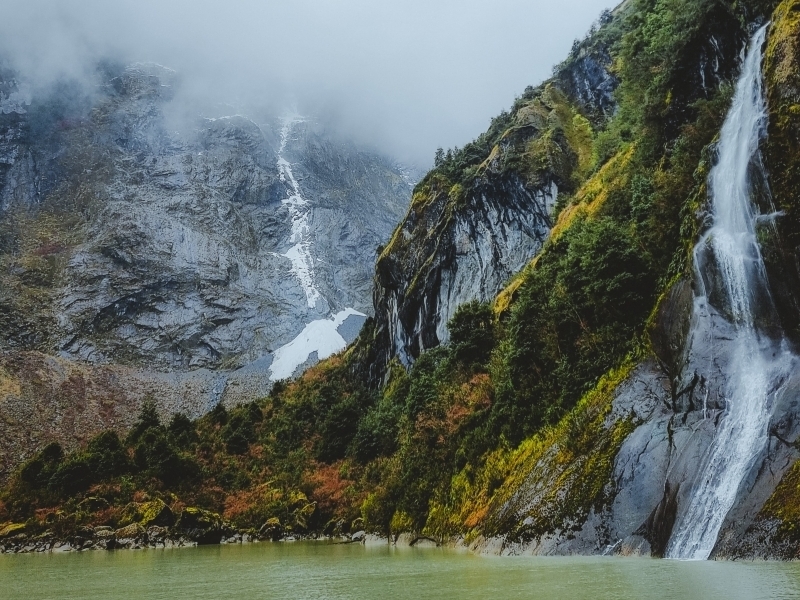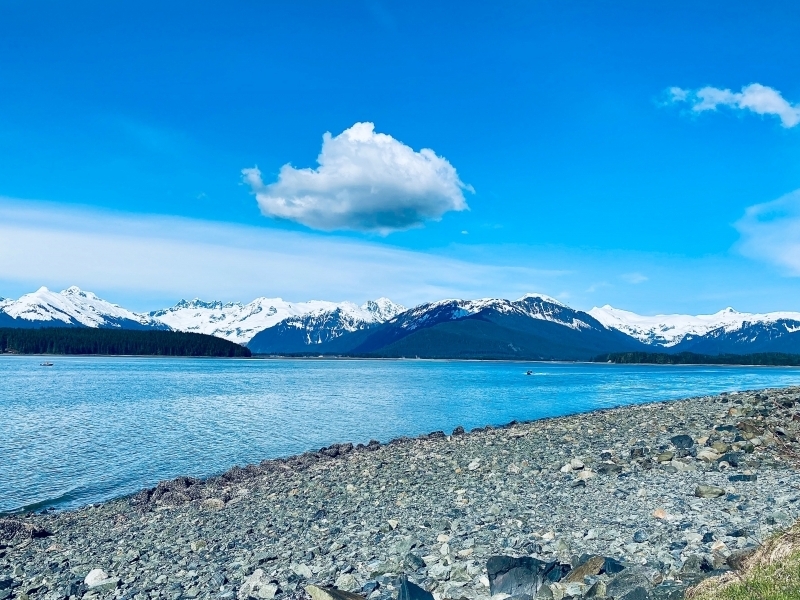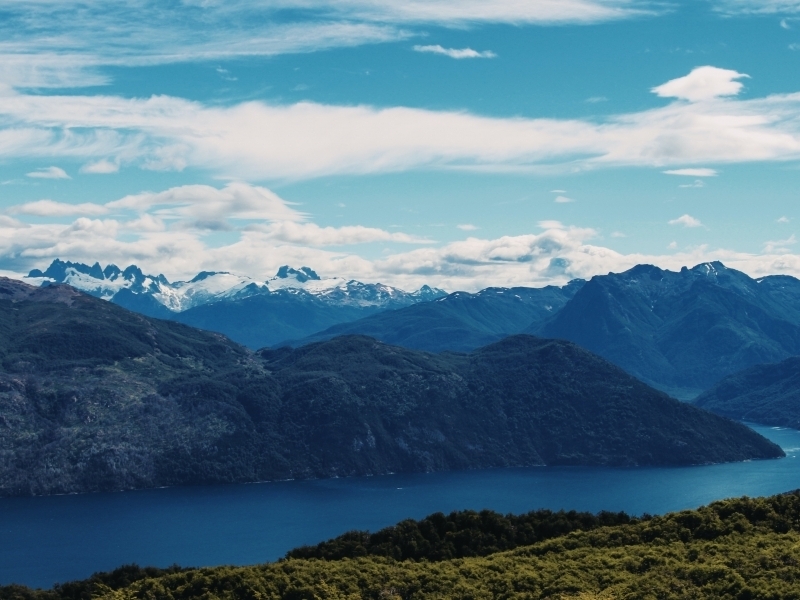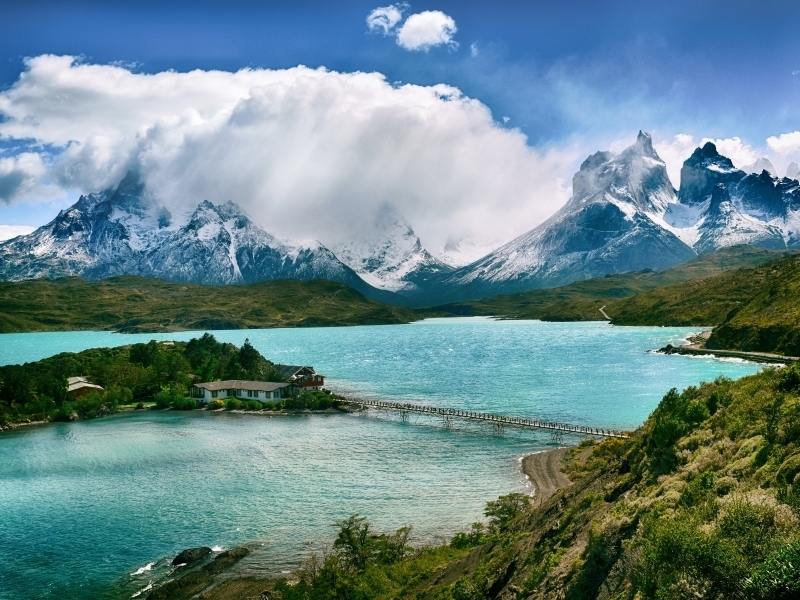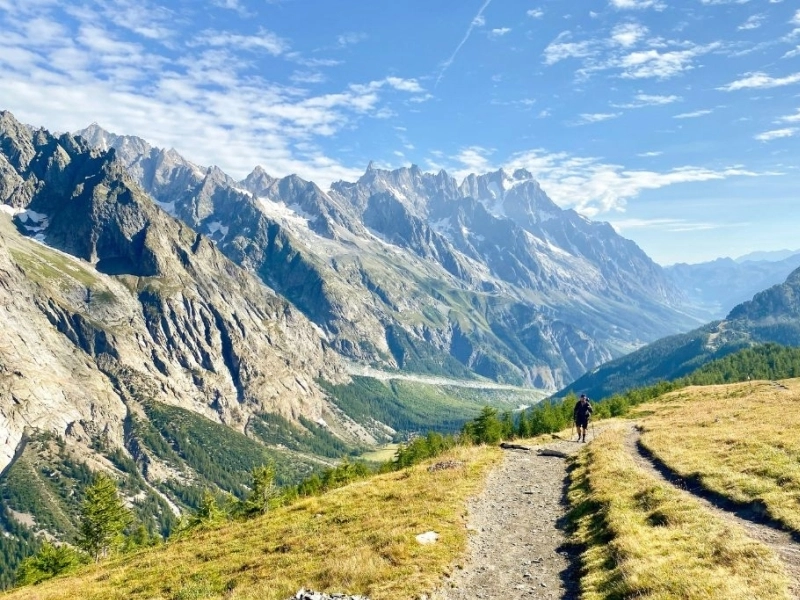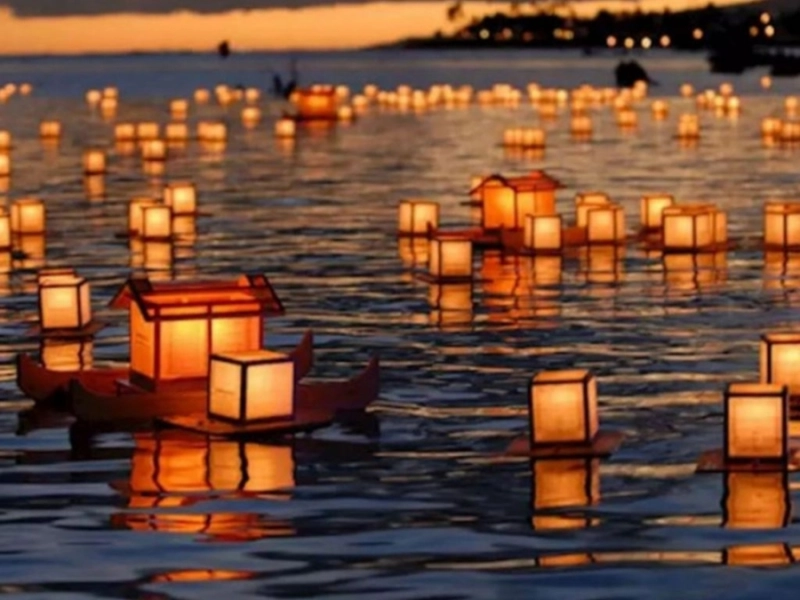News and Testimonials
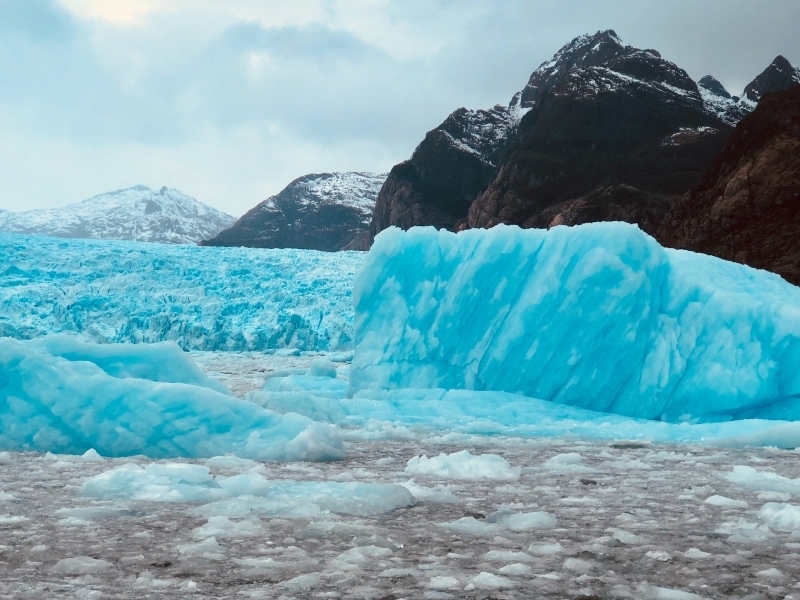
Patagonia's national parks feel like the edge of the world
Split between Chile and Argentina, the rugged regions of Patagonia and neighboring Tierra del Fuego boast more than a dozen national parks.
Sure, some South American countries beat them for sheer numbers of parks – Brazil has a staggering 69 national parks – but these southern nature reserves protect huge swaths of one of the last truly pristine wildernesses on Earth.
While some of the region's national parks are more accessible than others, they preserve a stunning range of habitats, from millennia-old alerce trees and ancient lava beds to impenetrable snow-tipped mountain ranges, immense glaciers and penguin-thronged coves.
From trail-crossed Torres del Paine and Parque Nacional Los Glaciares to the hard-to-reach shores of Yendegaia, these protected areas are synonymous with outdoor adventure. Some have well-established networks of mountain huts, while others are for self-sufficient wilderness experts only. As well as these big-hitters, there are numerous other national reserves, wilderness areas and natural monuments to explore.
However, the weather is an important factor in deciding when to come. The bulk of travelers visit these rugged national parks during the peak season of December to March, during the Southern Hemisphere summer, but some are also accessible during the shoulder season (October–November and April–May). The icy southern winter repels all but the hardiest of fresh air fiends.
If you have your heart set on seeing whales or penguins, it’s best to time your visit to coincide with the times they gather in the greatest numbers. Here's a guide to the best national parks in Patagonia for wildlife-spotting, trekking and more.
Parque Nacional Torres del Paine (Chile)
Overlooked by the soaring granite peaks that give the park its name, and the sculpted, dark-tipped outcrops known as the Cuernos de Paine, 1,810 sq km (699 sq mile) Torres del Paine is arguably South America’s finest national park. You've probably already seen photos of the Paine massif reflected in the pale blue waters of Lago Nordenskjöld. The mountains, glacial lakes, vast glaciers, areas of steppe and patches of dense forest are wonderfully accessible, thanks to well-developed trekking infrastructure. Trekkers can duck in on day hikes or tackle the park’s celebrated long-distance treks in relative comfort, staying in refugios (bunk huts) or glamping domes and finishing the day with a pisco sour. Alternatively, you can camp all the way – either carrying your own gear or paying for a tent to be put up for you as you make your way from campground to campground. Torres del Paine is renowned for its long-distance trails. The 69km (43 mile) “W” – named for the shape it traces on the map – takes in the park’s three main highlights: Glaciar Grey, Valle Francés and Los Cuernos and Las Torres. The 113km (70 mile) “Circuit” loops through the backcountry and climbs over John Gardner Pass before descending towards the Southern Ice Field, completing the loop around the park by linking up with the “W.” Given the enforced limits on visitor numbers and the park’s popularity, accommodations must be booked months in advance if you plan to visit during the December to February high season. Refugios and campgrounds are split between the organizations Vertice Patagonia and Fantástico Sur. If you have funds to spare, you can base yourself at one of the high-end wilderness lodges in the park – EcoCamp Patagonia or Patagonia Camp – and join in their organized day excursions instead.
Parque Nacional Los Glaciares (Argentina)
Most travelers who visit Torres del Paine also hop across the border to visit southern Argentina’s most popular national park, 7,269 sq km (2,806 sq mile) Parque Nacional Los Glaciares, which is divided into two zones. Accessed via the town of El Calafate, the star of the southern half of the park is the hugely impressive Perito Moreno glacier – one of the world’s few advancing glaciers. The ice sheet can be observed from a series of boardwalks, from a cruise boat sailing past its icy face, or by trekking across the ice with a local tour operator. Another popular activity from El Calafate is the boat cruise along Lago Argentino to the Upsala and Spegazzini glaciers. The northern half of the park is dominated by the craggy Fitz Roy mountain range – a world-class destination for rock climbers and hikers. The surprisingly cosmopolitan town of El Chaltén, at the foot of the massif, forms a very convenient base for visitors. You can take numerous day hikes – to Laguna de Los Tres, perhaps, or to Laguna Torre – returning at night to a boutique guesthouse or hostel before dining out on steak and craft beer. It’s also possible to use El Chaltén as a launchpad for tough, long-distance treks across the Southern Ice Field; local operators arrange guided hikes along with ice climbing and rock climbing instruction.
Parque Nacional Patagonia (Chile)
One of Chile’s newest national parks, 1,787 sq km (690 sq mile) Parque Nacional Patagonia is the result of intensive efforts by volunteers to rewild and restore the Chacabuco Valley, which was heavily damaged by the enormous sheep estancia (ranch) that occupied this area until 2004. Since then, large areas of the park have been replanted by hand with endemic vegetation. Stretching to the border with Argentina and dubbed the "Serengeti of the Southern Cone," the wind-battered valley shelters a large population of guanacos (lama-like camelids), as well as the endangered huemul deer, flamingos, vizcacha (rabbit-like rodents), ñandú (rhea) and the odd puma. Dedicated spotters can see these and other animals around the park's mountains and icy lagoons. You'll need a high clearance vehicle to explore the park properly. Several gorgeous day hikes start from near the visitors’ center, 17km (10.5 miles) north of the town of Cochrane. Tackling the ambitious three-day wild trek through the Áviles valley to nearby Reserva Nacional Jeinimeni requires serious advance planning.
Parque Nacional Pumalín Douglas Tompkins (Chile)
South of the Chilean town of Hornopirén, the land dissolves into a maze of fjords and tiny islands. These are the northern reaches of Parque Nacional Pumalín, which was one of the largest private nature reserves in the world before it was donated to the Chilean government in 2017 by philanthropists Doug and Kris Tompkins, two of the leading figures in conservation in Patagonia. The park covers 2,889 sq km (1,115 sq km) and the northern part of the reserve can only be accessed on boat cruises, or via multi-day sea kayaking excursions organized through agencies such as Ko Kayak and Alsur Expediciones. The southern half of the park, bisected by the Carretera Austral, has excellent infrastructure, including scenic campgrounds, cabins and lodges for hikers. Multiple trails start either from the southern highway or from El Amarillo, south of Chaitén. Sendero Volcán Chaitén takes you up to the crater of the volcano that wreaked devastation on Chaitén in 2008, while Sendero Los Alerces lets you acquaint yourself with a grove of critically endangered alerce trees, some nearly 4,000 years old. More trails lead to lagoons, hanging glaciers and waterfalls.
Parque Nacional Laguna San Rafael (Chile)
Encompassing 17,420 sq km (6726 sq miles) of southern beech forest, wetlands, and the icy tongue of Glaciar San Valentín, descending from Chile’s Campo de Hielo Norte (Northern Ice Field) towards a glacier-fed lagoon dotted with house-sized, teal-blue chunks of 30,000-year-old ice. This Unesco Biosphere Reserve makes for a highly memorable trip. You can sail here from Puerto Chacabuco with Catamaranes del Sur, or take the more wallet-friendly option by driving up the scenic Valle Exploradores from Puerto Río Tranquilo, then taking a shorter boat trip with Destino Patagonia. Either way, get here soon, as the glacier is shrinking every year.
Parque Nacional Queulat (Chile)
Straddling the Carretera Austral midway between the towns of Coyhaique and Chaitén, the raging rivers, meltwater lagoons, glacier-tipped mountains and southern beech forests of Parque Nacional Queulat see relatively few visitors. That’s partly because it’s almost always raining here. If you do visit, you'll find yourself bushwhacking through dense clumps of ferns along overgrown trails. However, the 3.2km (2 mile) trail from the park HQ to the icy Laguna de Los Témpanos is well worth the effort for its views of Ventisquero Colgante – the park’s famous hanging glacier.
Parque Nacional Cerro Castillo (Chile)
Overlooked by the needlepoint spires of the 2,700m (8,858ft) Cerro Castillo, this mountain reserve offers some serious long-distance hiking surrounded by high-alpine scenery. The park covers 1,796 sq km (693 sq miles) of glaciers, icy torrents and dense beech forest. The main park entrance is 76km (47 miles) south of the town of Coyhaique on the Carretera Austral; buses heading to the village of Villa Cerro Castillo or beyond can drop you off at the trailhead by the 75km marker. Infrastructure is minimal along the 40km (25 mile) Sendero Cerro Castillo but experienced trekkers who don't mind camping can have the backcountry pretty much to themselves en route to Villa Cerro Castillo.
Parque Nacional Monte León (Argentina)
Taking in some 621 sq km (240 sq miles) of Patagonian steppe, dramatic shorelines and sculpted headlands, this wonderful slice of wilderness has worn many hats during its long existence. Once a hunting ground for the Tehuelche people, and later a sheep estancia (ranch), the park is now home to 75,000 Magellanic penguins, as well as sea lions, guanacos and pumas. Accessing the park via the gravel RN-3 from Río Gallegos or Comandante Luis Piedrabuena, you can drive as far as the cliffs at Cabeza de León, then park up and follow nature trails leading to the coast. Hiking along the shore is best at low tide, when you can cross to the offshore sea stack of Isla Monte León, which you’ll smell before you reach it, thanks to its large population of skuas, cormorants and gulls.
Parque Nacional Perito Moreno (Argentina)
Not to be confused with the namesake glacier or Parque Nacional Los Glaciares, this remote slice of steppe, dotted with aquamarine lakes and overlooked by the glacier-topped Sierra Colorada mountains, makes a worthwhile detour from Argentina’s iconic Ruta 40. Besides solitude (the park sees only several hundred visitors a year), highlights include panoramic views from Cerro León, condor sightings at Cerro de los Cóndores, cave art at Lago Burmeister and stunning scenery on the all-day hike around Lago Belgrano. Camp at free, basic campsites or stay at the nearby Estancia Oriental.
Parque Nacional Bernardo O’Higgins (Chile)
Accessible only by boat tour from Puerto Natales, this hard-to-reach national park is all glaciers and mountains and fjords. Turismo 21 de Mayo offers day trips to the base of Glaciar Serrano, with a traditional barbecue lunch. It’s possible to continue up the Río Serrano in a Zodiac boat to Torres del Paine with the same operator.
Parque Nacional Pali Aike (Chile)
Pali Aike means ‘devil’s country’ in the indigenous Tehuelche language, and you’ll see what they mean when you come face to face with this stark, desolate landscape of craters, steppe, ancient lava beds and red- and yellow-hued volcanic rock. Some 200km (124 miles) northeast of Punta Arenas, by the border with Argentina, this national park is traversed by several hiking trails, including a short but rewarding path overlooking the huge Crater Morada del Diablo. Sturdy footwear is a must.
Parque Nacional Yendegaia (Chile)
Forming a strategic wildlife corridor between the virtually inaccessible Parque Nacional Alberto de Agostini in the Cordillera Darwin, and Parque National Tierra del Fuego, Parque Nacional Yendegaia is one of Chile’s most remote national parks, with tremendous appeal for self-reliant adventurers. Comprising part of the snow-covered Cordillera Darwin, the park includes dense Fuegian foresta, glacial bays and former ranchlands in the process of being rewilded. Yendegaia is currently accessible by weekly ferry between Punta Arenas and Puerto Williams; drop-offs must be requested in advance, and visitors must be completely self-sufficient.
Parque Nacional Tierra del Fuego (Argentina)
Accessed via the gravel RN-3 from Ushuaia, Tierra del Fuego’s most accessible national park comprises 630 sq km (243 sq miles) of sub-Antarctic tundra, jagged peaks, Fuegian forest, swampy peat bog and pristine coastline, squeezed between the Beagle Channel and Lago Fagnano. This wilderness is inhabited by the endangered Fuegian fox, Canadian beavers, guanacos and sea otters, as well as prolific birdlife, including condors, oyster-catchers, steamer ducks. The park stretches all the way to the border with Chile, but only the southernmost section is open to visitors, with several rudimentary campsites and plenty of scope for wild camping. Overnighting is not mandatory; there are numerous day hikes, from the scenic tramp to the Mirador Lapataia to the coastal Senda Costera trail.
Source: https://www.lonelyplanet.com/articles/best-national-parks-patagonia


